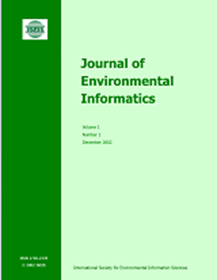Assessing Environmental Oil Spill Based on Fluorescence Images of Water Samples and Deep Learning
IF 5.4
1区 环境科学与生态学
Q1 ENVIRONMENTAL SCIENCES
引用次数: 0
Abstract
Measuring oil concentration in the aquatic environment is essential for determining the potential exposure, risk, or injury for oil spill response and natural resource damage assessment. Conventional analytical chemistry methods require samples to be collected in the field, shipped, and processed in the laboratory, which is also rather time-consuming, laborious, and costly. For rapid field response immediately after a spill, there is a need to estimate oil concentration in near real time. To make the oil analysis more portable, fast, and cost effective, we developed a plug-and-play device and a deep learning model to assess oil levels in water using fluorescent images of water samples. We constructed a 3D-printed device to collect fluorescent images of solvent-extracted water samples using an iPhone. We prepared approximately 1,300 samples of oil at different concentrations to train and test the deep learning model. The model comprises a convolutional neural network and a novel module of histogram bottleneck block with an attention mechanism to exploit the spectral features found in low-contrast images. This model predicts the oil concentration in weight per volume based on fluorescence image. We devised a confidence interval estimator by combining gradient boosting and polymodal regressor to provide a confidence assessment of our results. Our model achieved sufficient accuracy to predict oil levels for most environmental applications. We plan to improve the device and iPhone application as a near-real-time tool for oil spill responders to measure oil in water.基于水样荧光图像和深度学习的环境溢油评估
测量水生环境中的石油浓度对于确定潜在的暴露、风险或伤害以及石油泄漏响应和自然资源损害评估至关重要。传统的分析化学方法需要在现场采集样品,运输,并在实验室处理,这也是相当耗时、费力和昂贵的。为了在泄漏后立即进行快速现场响应,需要近乎实时地估计石油浓度。为了使石油分析更加便携、快速和经济,我们开发了一个即插即用设备和一个深度学习模型,利用水样的荧光图像来评估水中的石油水平。我们构建了一个3d打印设备,用于使用iPhone收集溶剂提取水样的荧光图像。我们准备了大约1300个不同浓度的油样本来训练和测试深度学习模型。该模型由卷积神经网络和直方图瓶颈块模块组成,该模块具有注意机制,可以利用低对比度图像中的光谱特征。该模型基于荧光图像预测每体积重量的油浓度。我们设计了一个置信区间估计器,结合梯度增强和多模态回归来提供我们结果的置信度评估。我们的模型达到了足够的精度,可以预测大多数环境应用中的油位。我们计划改进设备和iPhone应用程序,使其成为石油泄漏应急人员测量水中石油的近实时工具。
本文章由计算机程序翻译,如有差异,请以英文原文为准。
求助全文
约1分钟内获得全文
求助全文
来源期刊

Journal of Environmental Informatics
ENVIRONMENTAL SCIENCES-
CiteScore
12.40
自引率
2.90%
发文量
7
审稿时长
24 months
期刊介绍:
Journal of Environmental Informatics (JEI) is an international, peer-reviewed, and interdisciplinary publication designed to foster research innovation and discovery on basic science and information technology for addressing various environmental problems. The journal aims to motivate and enhance the integration of science and technology to help develop sustainable solutions that are consensus-oriented, risk-informed, scientifically-based and cost-effective. JEI serves researchers, educators and practitioners who are interested in theoretical and/or applied aspects of environmental science, regardless of disciplinary boundaries. The topics addressed by the journal include:
- Planning of energy, environmental and ecological management systems
- Simulation, optimization and Environmental decision support
- Environmental geomatics - GIS, RS and other spatial information technologies
- Informatics for environmental chemistry and biochemistry
- Environmental applications of functional materials
- Environmental phenomena at atomic, molecular and macromolecular scales
- Modeling of chemical, biological and environmental processes
- Modeling of biotechnological systems for enhanced pollution mitigation
- Computer graphics and visualization for environmental decision support
- Artificial intelligence and expert systems for environmental applications
- Environmental statistics and risk analysis
- Climate modeling, downscaling, impact assessment, and adaptation planning
- Other areas of environmental systems science and information technology.
 求助内容:
求助内容: 应助结果提醒方式:
应助结果提醒方式:


